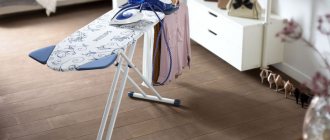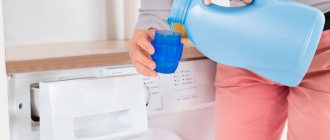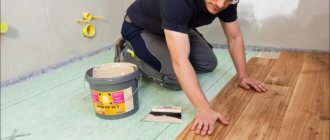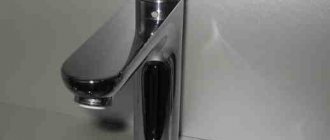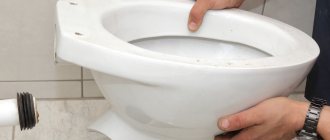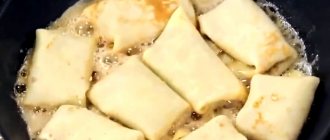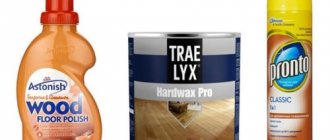By carefully studying the online rating of the best antistatic agents for clothing for 2022, you can purchase the most suitable care product for your wardrobe. The popular models on the market differ not only in price and composition. Various manufacturers are constantly improving the technology for creating such products, adding aromatic fragrances to them or expanding the scope of application. To avoid mistakes when choosing, you must carefully read the composition on the back of the cylinder with the attached instructions and photos.
Why do you need an antistatic agent?
The first step is to give a precise definition of the concept in question.
An antistatic agent is a household chemical product made on an alcohol or water basis that prevents the occurrence of static electric discharge on various surfaces.
An antistatic agent is necessary to eliminate the following unpleasant phenomena:
- “magnetization” of dust, wool, hair to clothing;
- exposure to weak electric current;
- electrification of hair indoors;
- sticking of things.
Kinds
There are several types of antistatic agents that can be used to treat clothing:
Alcohol sprays . They are presented in cans that contain ethyl alcohol and other auxiliary components (propane, isobutane, fragrance). Sprays are used after washing, treating electrified items with it. The aerosol not only eliminates static electricity from clothes, but also makes the fabrics soft.
Varieties
All antistatic household chemicals can be divided into three groups
Sprays
This form of release has become the most popular among buyers in recent years. The aerosol, depending on the composition, can be alcohol- or water-based. Alcohol-based compositions have a strong, repulsive odor, often provoke allergic reactions, irritate the nasal mucosa, and cause a burning sensation with frequent itching. The use of alcohol products should be carried out in a thoroughly ventilated area. The main advantage of this spray is its speed of action. Water-based aerosols are not as harmful and are suitable for people prone to allergies.
Concentrated pastes and creams
Compositions sold commercially in this form are pre-diluted with water. Designed for products made from materials such as nylon, nylon and faux fur.
Liquid products
They are added during the washing process. The products become soft and their electrification is prevented.
Harmful properties of fabric softeners
Be sure to carefully read the information on the packaging. Possible harmful substances in antistatic agents:
- ammonium compounds. They make clothes soft and silky, but are also potentially dangerous and can cause asthma or problems with the reproductive system. Spelling variations: chloride, distearyldimonium, diethyl ester dimethyl, methyl ammonium sulfate;
- high content of flavors. Can cause allergic reactions, skin irritation, dermatitis, shortness of breath;
- preservatives and dyes. Methylisothiazolinone, Glutaral are powerful allergens. Allergies can turn into asthma, and skin rashes into advanced dermatitis;
- benzyl alcohol, benzyl acetate. Possible consequences of their use range from irritation of the respiratory tract to the development of cancerous tumors.
What is the difference between different antistatic agents
Before choosing the most suitable type of composition, you should keep in mind what antistatic agents are, depending on the main component:
- alcohol;
- aquatic.
The evaporation of ethyl alcohol from the treated surface occurs quite quickly. However, this type of product has a specific, pungent odor. An alcohol-based antistatic agent is recommended for spraying in thoroughly ventilated areas or outdoors. The clothes will be ready a few hours after the treatment has been carried out. The validity period of the applied layer is about two days. However, for each individual product the duration of the period is indicated in the instructions.
The water composition is more convenient to use and safe. However, often even the best manufacturers of such products in 2022 add components that cause allergic reactions. Water-based antistatic agents have a shorter duration of action compared to alcohol-based ones. In view of this, clothing will have to be sprayed daily.
Antistatic air conditioners
There is also a separate group of antistatic conditioners for washing machines, which are added to the water during washing. During use, you must strictly follow the instructions on the back of the package. For example, when washing by hand, liquid is poured into the compartment before the final stage of rinsing the laundry. It should be noted that this compartment, depending on the model of the washing machine, is marked with an asterisk or a flower. The dosage must be calculated correctly. If the amount of conditioner is insufficient, you will not be able to achieve the desired effect. Excess will cause liquid to remain on clothes after washing.
How to choose the best?
Before purchasing an antistatic agent for washing, you need to pay attention to the following points:
Compound. An antistatic agent may contain: surfactants, silicones, alcohols, acids, glycerin.
The fewer aggressive components on this list, the better. Be sure to pay attention to fragrances and fragrances. Many people prefer products that do not give off an extraneous odor.- Method of use . Conditioners are added to the washing machine immediately during washing. Things are treated with sprays and aerosols after completion.
- Secondary functions . In addition to removing static electricity, many antistatic agents have an additional effect on the fabric: they whiten or preserve the color of things, making them softer.
- What products will it be used for? There are products intended only for caring for children's things.
They contain a reduced level of surfactants and contain a minimum of fragrances, which reduces the risk of developing allergies. Children's products should not contain components such as: A-terpineol (affects the nervous system), ethanol (impairs brain function), benzyl alcohol (can cause nausea and dizziness), linalool (impairs coordination of movements). - Price. The price depends on the manufacturer of the antistatic agent. Eco-friendly products are more expensive than conventional ones.
Top 3 popular remedies
The most popular antistatic agents for washing that are in demand among consumers:
Lenor Scandinavian spring
This is an inexpensive fabric softener that has the ability to remove static electricity. This gel can only be used to care for adult clothing.
It contains:
- cationic surfactants,
- aldehyde,
- flavorings,
- linalool.
For highly electrified fabrics, you will need 140 ml of antistatic agent for every 5 kg of laundry (1 measuring cup + 1/3 cup). For ordinary things, 110 ml (1 measuring cup) is enough.
For washing diapers and undershirts, choose Lenor for children, with an adapted composition. The cost of 1 liter is about 120 rubles .
Eared nanny
This product is intended for children's things :
- does not contain dyes,
- softens linen,
- contains Aloe vera,
- passed all the necessary dermatological tests,
- does not cause allergies.
For hand washing, 1 cap (45 ml) is required for every 10 liters of water. For machine washing, take 2 measuring caps (90 ml) for every 4-5 kg of laundry. The cost of 750 ml of the product is about 80 rubles .
Synergetic
This biodegradable laundry detergent with an antistatic effect has an environmental certificate of conformity of the Russian Federation.
It contains:
- structured water,
- silver ions,
- plant complexes,
- flavorings based on natural oils,
- food coloring.
For every 5 kg of laundry you will need 30 ml of conditioner, so 2.75 liters is enough for 90 washes. Its cost is 230 rubles .
Method of using aerosol antistatic agent
Universal step-by-step instructions for using antistatic agents for things are as follows:
- Spray the aerosol on the inside of the product. Treat the outer part if necessary.
- During the spraying process, maintain a distance of at least thirty centimeters between the cylinder and the surface to be treated.
- The composition should be applied in the form of a “light cloud”, observing the measure in spraying - the appearance of excess will lead to the formation of white noticeable spots.
- It is not recommended to spray antistatic agent on all wardrobe items - this can lead to the exact opposite effect.
Types of antistatic agents
Antistatic agents are available for a wide variety of surfaces.
Antistatic charges are added to liquids used to clean floors, windows, carpets, etc.
This reduces dust accumulation and keeps surfaces clean longer. For clothing, sprays that are sprayed onto the fabric or laundry conditioners are most often used.
Antistatic for clothes
To take the strain off a synthetic wool blouse or skirt, household chemical manufacturers make various types of antistatic clothing. Rinse off with paste or rinse. The easy-to-use spray should be stored in a convenient place.
Antistatic air conditioners
When washing, antistatic conditioners should be added to the washing powder. They are usually available in liquid form and have a similar composition. They are based on surfactants and silicone. Some conditioners do not contain silicone. It is needed to repel or absorb moisture. However, surfactants do a good job of this task. In addition to the base, thickeners, flavors and preservatives are added to the liquid.
How to use mouthwash
During automatic flushing, pour liquid into the special receiver chamber. You can also pour the liquid into a special dispenser and pour it into the drum. Conditioner is applied before the start of the cycle.
When washing by hand, dissolve the liquid in water before the final rinse. Soak the laundry for five to ten minutes, wring out and hang to dry.
Important. The dose recommended by the manufacturer should be followed.
Special sprays
When they call it "anti-static," most people think of a can of metallic spray with a strong smell. However, in addition to aerosols, there are also solutions that are sprayed from aerosol cans.
Aerosols are made from ethyl alcohol, which quickly evaporates from the surface, leaving a surfactant. A significant disadvantage of alcohol sprays is the unpleasant odor. Some manufacturers try to disguise this with perfume, but the result is even worse.
In a closed room, the pungent odor irritates the mucous membranes and can cause allergies.
The spray is often water-based. They are slightly fragrant. Some types are available odorless. The principle of operation is the same: moisture evaporates, and a film remains on the fabric.
How to use antistatic spray
Spray the product on the underside of your skirt, dress, or pants. This can be done before wearing or already in place. There is no need to spray on the other side (legs, body, underwear). This will only worsen the effect. Use antistatic agent at a distance of 20-30 cm from the surface.
Attention please. When washing, thoroughly rinse clothes with antistatic agent.
Cream paste
The test tube contains antistatic paste. It is available with and without fragrance.
This is a concentrated product that is diluted with water before use.
How to use the paste
The amount of cream specified by the manufacturer must be dissolved in water. Dip your clothes into the resulting solution. Leave on for five to ten minutes and rinse off.
To remove fur, you need to pour liquid into a spray bottle and spray it on the fur. Shake the clothes and let them dry.
What can replace antistatic clothing if there is no ready-made product at hand?
Try replacing antistatic products with readily available products that work like store-bought mixtures. Make your own antistatic agent from vinegar, soda, salt, and lemon solution.
Advice. A rich cream will help quickly relieve electrostatic stress. Rub their feet and put on nylon tights. This will reduce friction on the skirt.
Vinegar
When washing clothes, use table vinegar instead of rinse vinegar. Add this when rinsing synthetic clothing. The vinegar solution not only removes electricity, but also makes the fabric softer and helps remove laundry detergent.
Soda
Mix baking soda and vinegar in a 6:1 ratio. After stirring, wait for an active reaction.
Rinse aid and vinegar
You can use the prepared mixture instead of antistatic:
- Dilute two parts of hair, rinse with three parts of table vinegar.
- Pour in six parts water.
- Pour the solution into a plastic bottle.
- Add when rinsing.
It can be poured into the machine or while washing hands. Half a cup is enough for a full load.
Salt
Instead of using homemade conditioner, use table salt (one teaspoon per ten liters) to rinse your clothes by hand. For quick fixation, pour the solution into a spray bottle and spray the bottom.
Water
Fill the spray bottle with cold water and wet the bottom. This method is effective, but short-lived.
Mix with lemon juice. This will enhance this effect. In addition, lemon refreshes and flavors fabrics. Pour a tablespoon of juice into five liters of water. If you don't have lemon, add laundry conditioner in similar proportions.
Spray varnish
Apply antistatic hairspray to clothing. It also contains substances that repel dirt and relieve static electricity.
Soap
A bar of soap will help relieve stress before leaving the house. Wipe the rod from the back of the fabric. The layer can be updated after 24 hours. Be careful not to leave large amounts of soap on the escaping fibers.
Advice. Attach a pin to an electrifying seam of clothing, which will collect electricity.
Making antistatic agent at home
Useful tips and life hacks on how to replace store-bought ones and how to make an antistatic compound with your own hands from improvised materials:
- pour water into a spray bottle and treat the fabric - the disadvantage of this method is the short duration of the effect;
- during the washing process, add lemon juice to the rinse water;
- when rinsing, pour in half a glass of 9% table vinegar or a teaspoon of table salt;
- make a liquid mixture of six parts water, three parts 9% vinegar and two parts hair conditioner, added during rinsing.
DIY remedy
Situations when, for some reason, it is not possible or there is no desire to use a factory antistatic agent, often occur. Then people wonder what can be used instead of antistatic for clothes. There are many options, all that remains is to choose the most suitable one for yourself.
For a home remedy, you will need a spray bottle, and the composition depends on the comfort and preference of the person. The basis of a home spray is water. And in addition to it there may be one or two ingredients, for example, salt, soda, vinegar, soap, body or face cream, hair balm, lemon, perfume (the latter for aroma).
Comparison table of characteristics
For a more objective assessment of antistatic agents, we have prepared a summary table combining all the characteristics of the described products:
| Name | Volume, ml | Purpose | date , days | A country | Price, rubles |
| Cotico WATERSPRAY | 200 ml 500 ml | For any fabrics and surfaces | 1095 days | Russia | 105-300 rubles 167-485 rubles |
| Lyra Neutral scent | 200 ml | For all types of fabrics | 545 days | Russia | 65-199 rubles |
| Chirton | 200 ml | For clothing, curtains, fabric covers, bed linen, polymer products, plastics | 730 days | Russia | 67-257 rubles |
| Bagi | 200 mo | For clothing made from any fabrics, interior fabric coverings and carpets | 1095 days | Israel | 284-331 rubles |
| Lion Elegant protection | 75 ml 160 ml | For all fabrics and natural fur | 1825 days | Japan/ Korea | 380-790 rubles 1010 rubles |
| Lana 3 in 1 | 180 ml | For carpets, dishes, fabrics, furniture, hair | 1095 days | Russia | 56-100 rubles |
| Kao Style Care | 200 ml | For clothes | 1095 days | Japan | 408-589 rubles |


